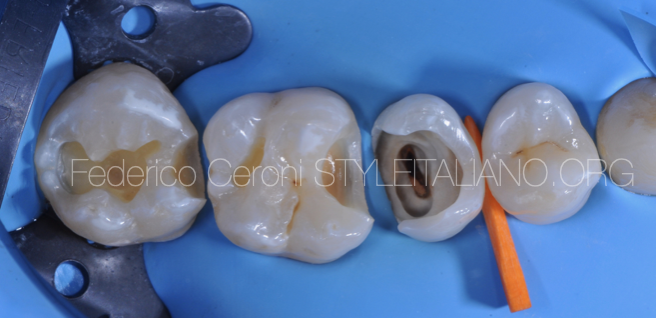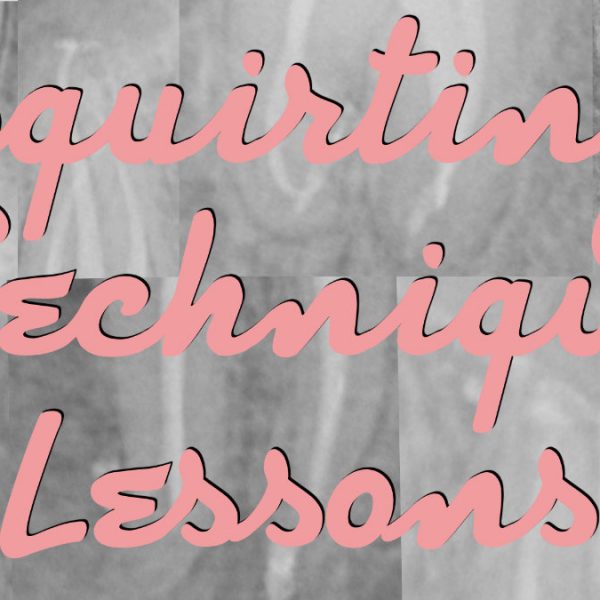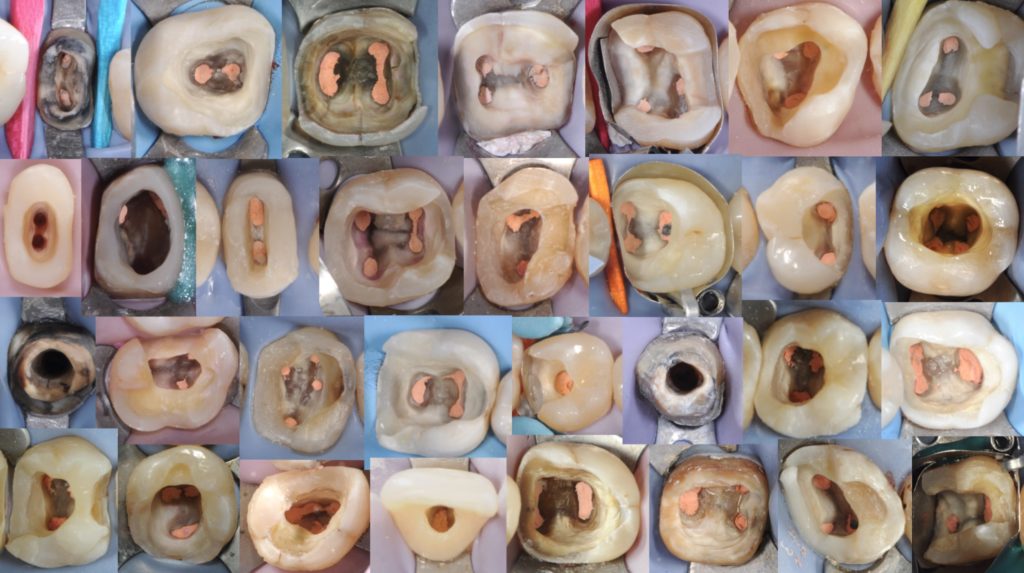
Decision making in endo-perio-restorative cases of severely compromised teeth
21/11/2024
Fellow
Warning: Undefined variable $post in /var/www/vhosts/styleitaliano-endodontics.org/endodontics.styleitaliano.org/wp-content/plugins/oxygen/component-framework/components/classes/code-block.class.php(133) : eval()'d code on line 2
Warning: Attempt to read property "ID" on null in /var/www/vhosts/styleitaliano-endodontics.org/endodontics.styleitaliano.org/wp-content/plugins/oxygen/component-framework/components/classes/code-block.class.php(133) : eval()'d code on line 2
The recovery of severely compromised teeth is a challenge for clinicians. Every day, we face this issue, and it is crucial to choose the correct technique and, above all, the proper sequence of operations to simplify the process, reduce the number of appointments, and meet the patient’s needs as quickly as possible.
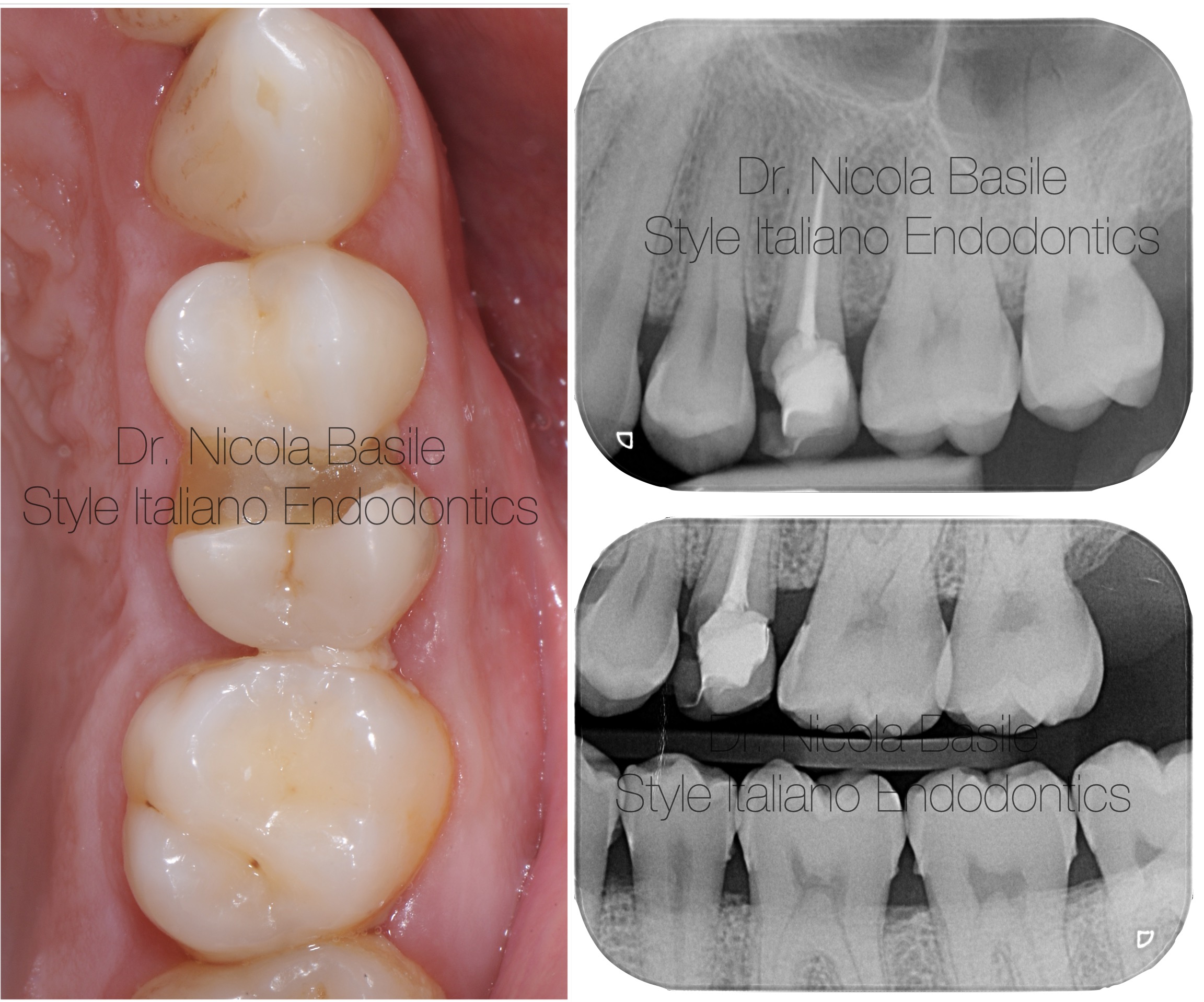
Fig. 1
In this article, a clinical scenario would be presented regarding a patient living 400 km away from my dental practice, which happens to be in his hometown. He requested to treat his tooth once a month, when he comes to visit his relatives.
Diagnosis: Failure of a partial coronal restoration on tooth 2.5 due to marginal infiltration and fracture of the mesial portion. Distal caries on 2.4 and mesial caries on 2.6.
Therapy: Endodontic retreatment, clinical crown lengthening, core restoration with luting of fiber post, and prosthetic crown on tooth 2.5; direct composite restoration on the distal of 2.4 and mesial of 2.6.
In agreement with the patient and in the absence of acute symptoms, although tooth 2.5 requires retreatment, it has been decided to perform endo pre-treatment with surgery and definitive restoration of the peripheral walls of the tooth during the first session.
Surgical treatment is indicated to restore periodontal health in the presence of subgingival carious lesions violating the tooth's attachment apparatus.
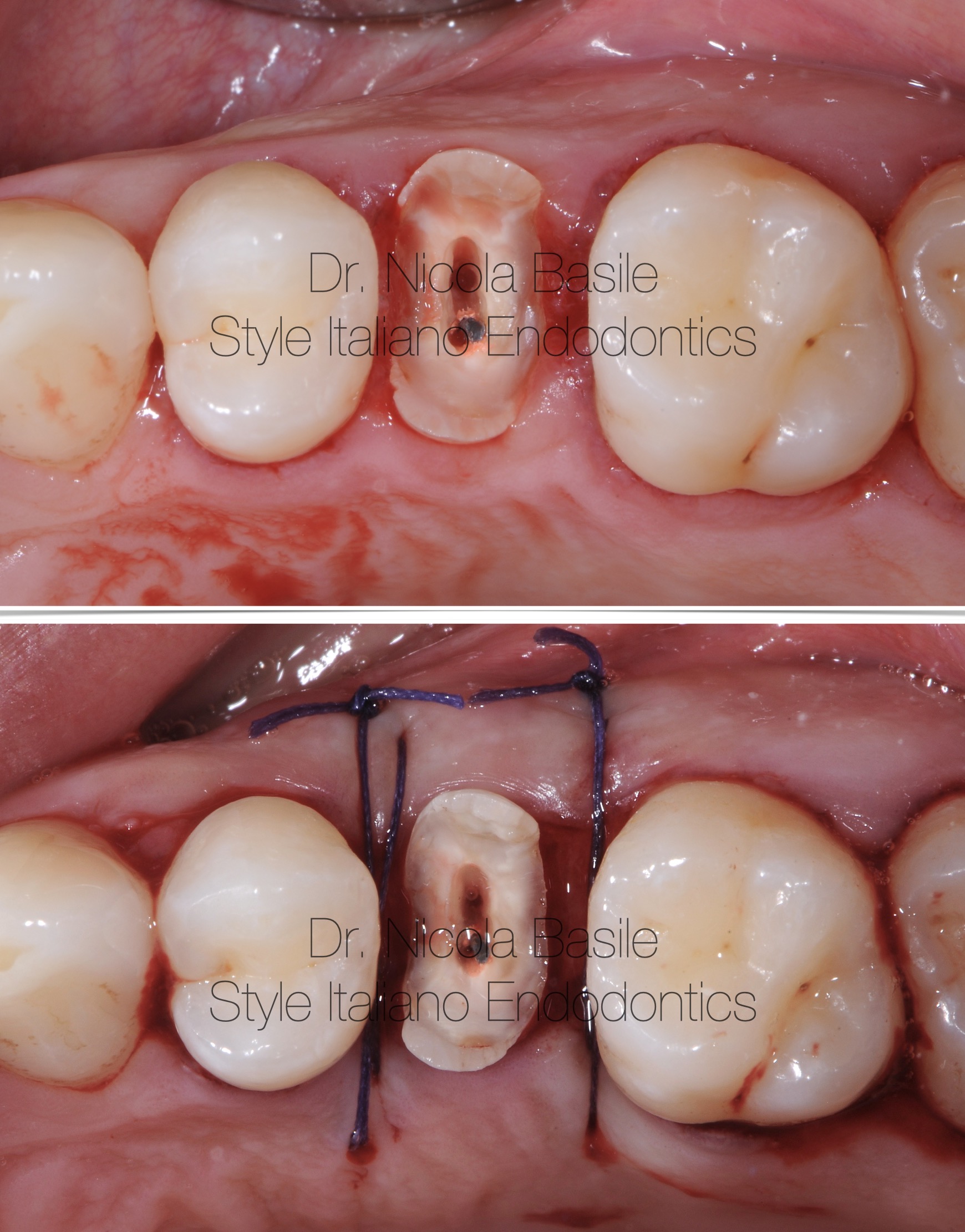
Fig. 2
First appointment:
The old restoration and the carious lesion on tooth 2.5 are removed, and minimally invasive crown lengthening procedure is performed.
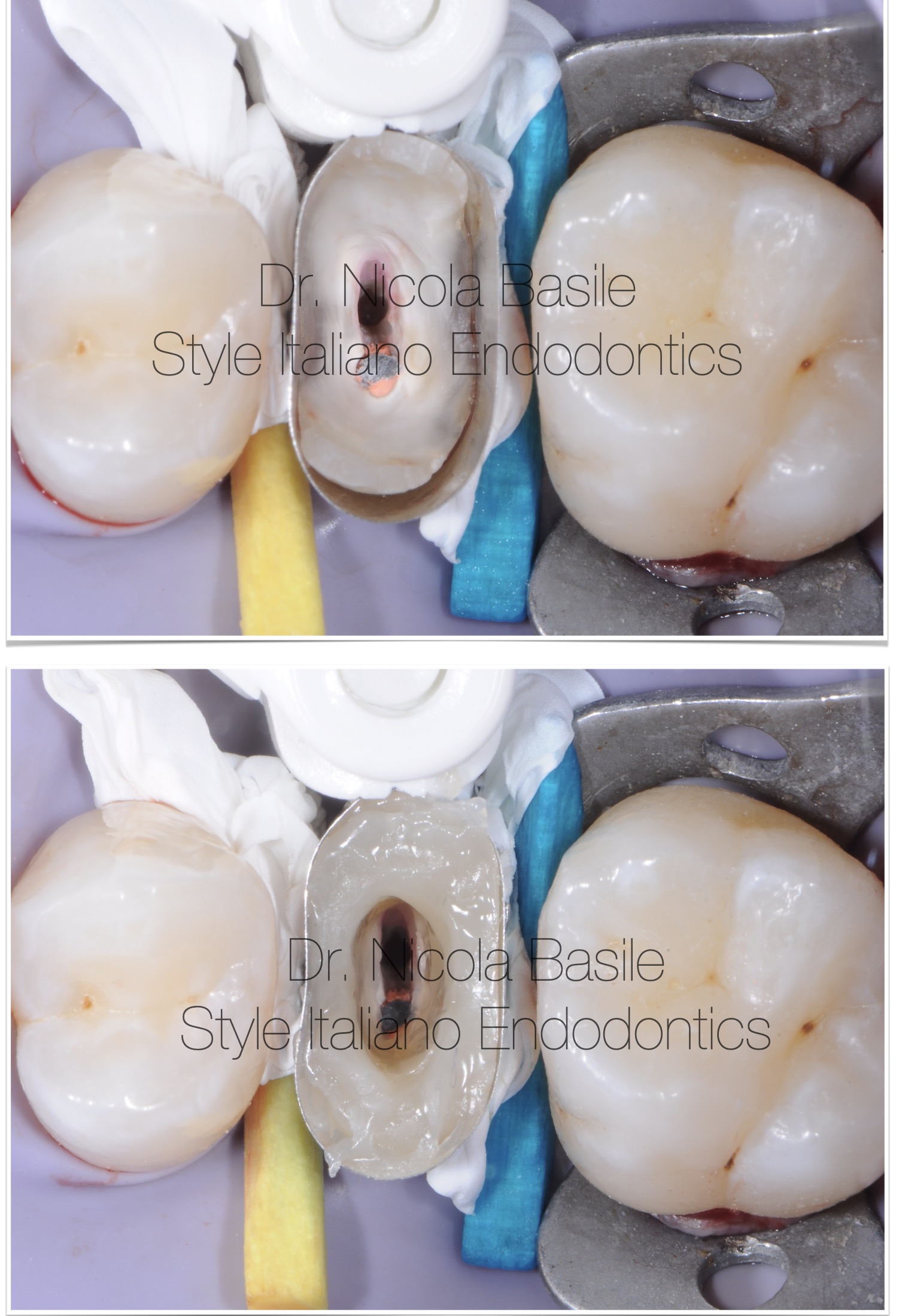
Fig. 3
After the surgery, a definitive pre-endodontic restoration is performed during the same session.
This is done to provide the patient with a more favorable aesthetic situation between clinical appointments.
The restoration was carried out using a cervical-stabilized ring matrix with two wedges. The peripheral walls were reconstructed to an adequate thickness with packable composite, and the central portion was closed with temporary material.
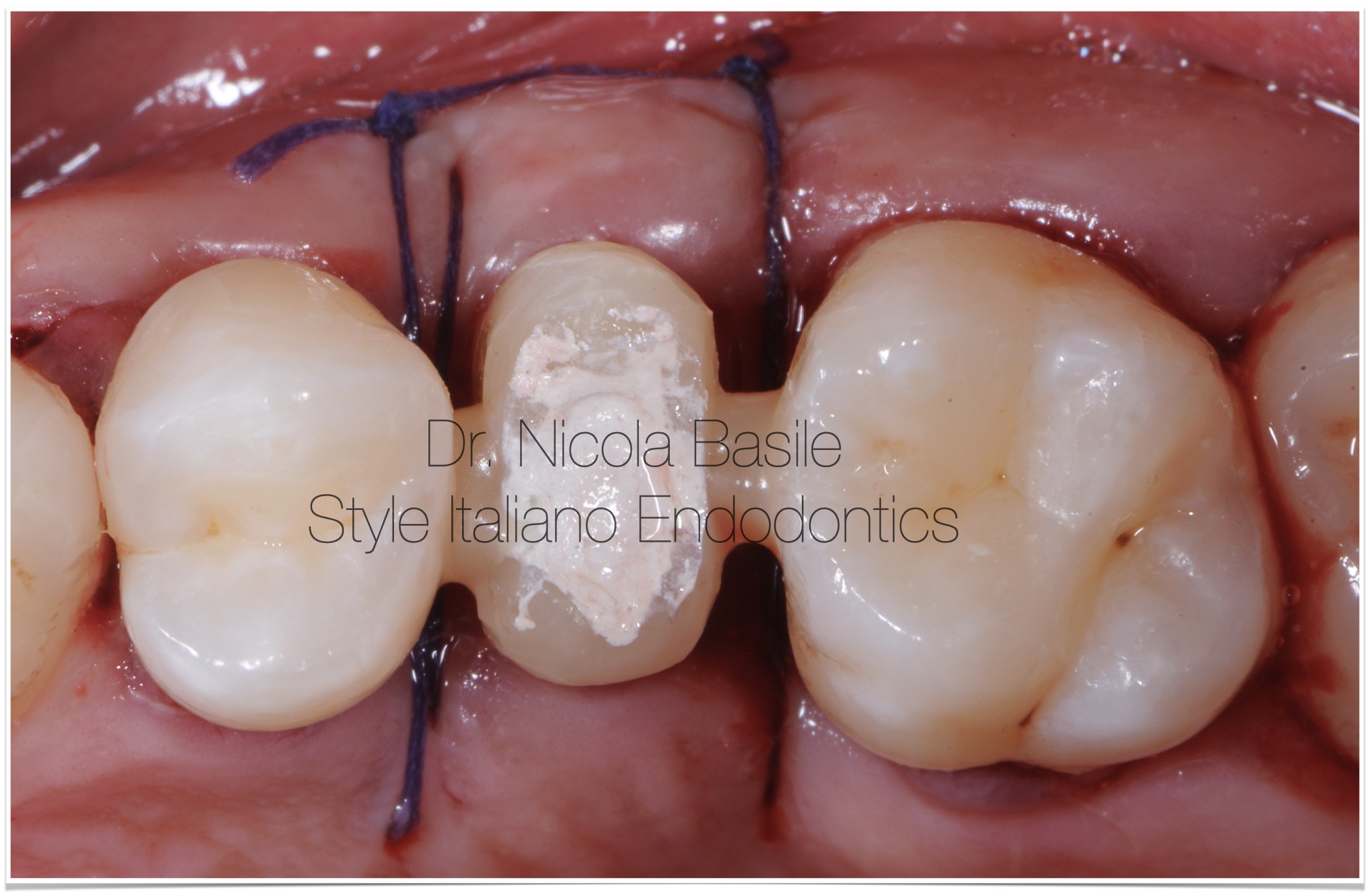
Fig. 4
The tooth is splinted to the adjacent teeth with two drops of high viscosity flowable composite. The restoration is under occlusion. The patient is instructed on the proper home oral hygiene practices. An agreement is made with him regarding the method for removing the sutures 10 days after the procedure, as he is unable to return.
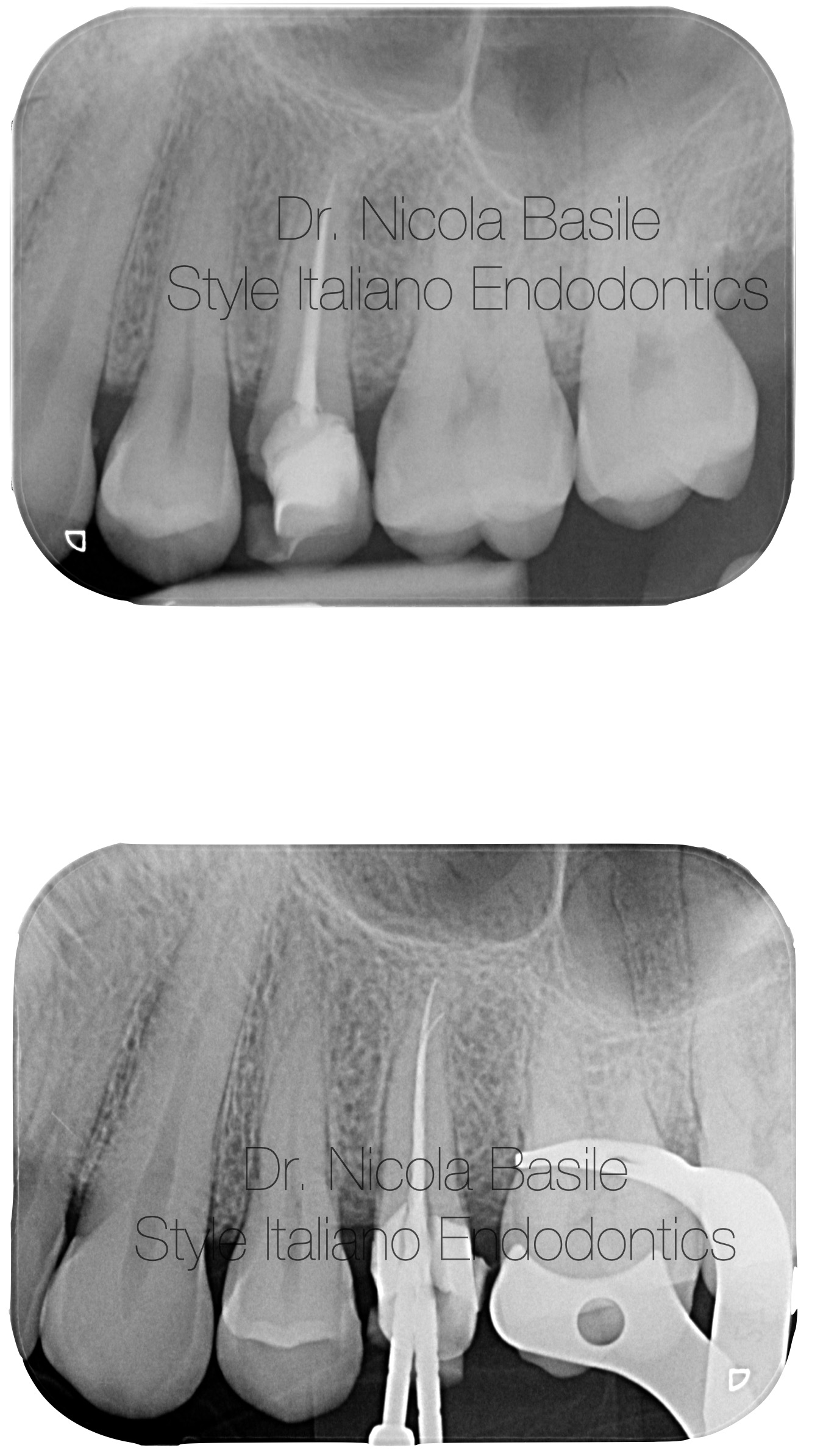
Fig. 5
Second appointment (one month later):
The endodontic retreatment is performed.
The old thermafil filling is removed, and the two canals are probed, which converge in the middle third and then become independent at the apical level. This is classified as Type VII according to Vertucci's classification.
Shaping is carried out with the final instrument 30.04, and a 5.25% NaCl solution is used throughout the shaping process to disinfect and remove debris.
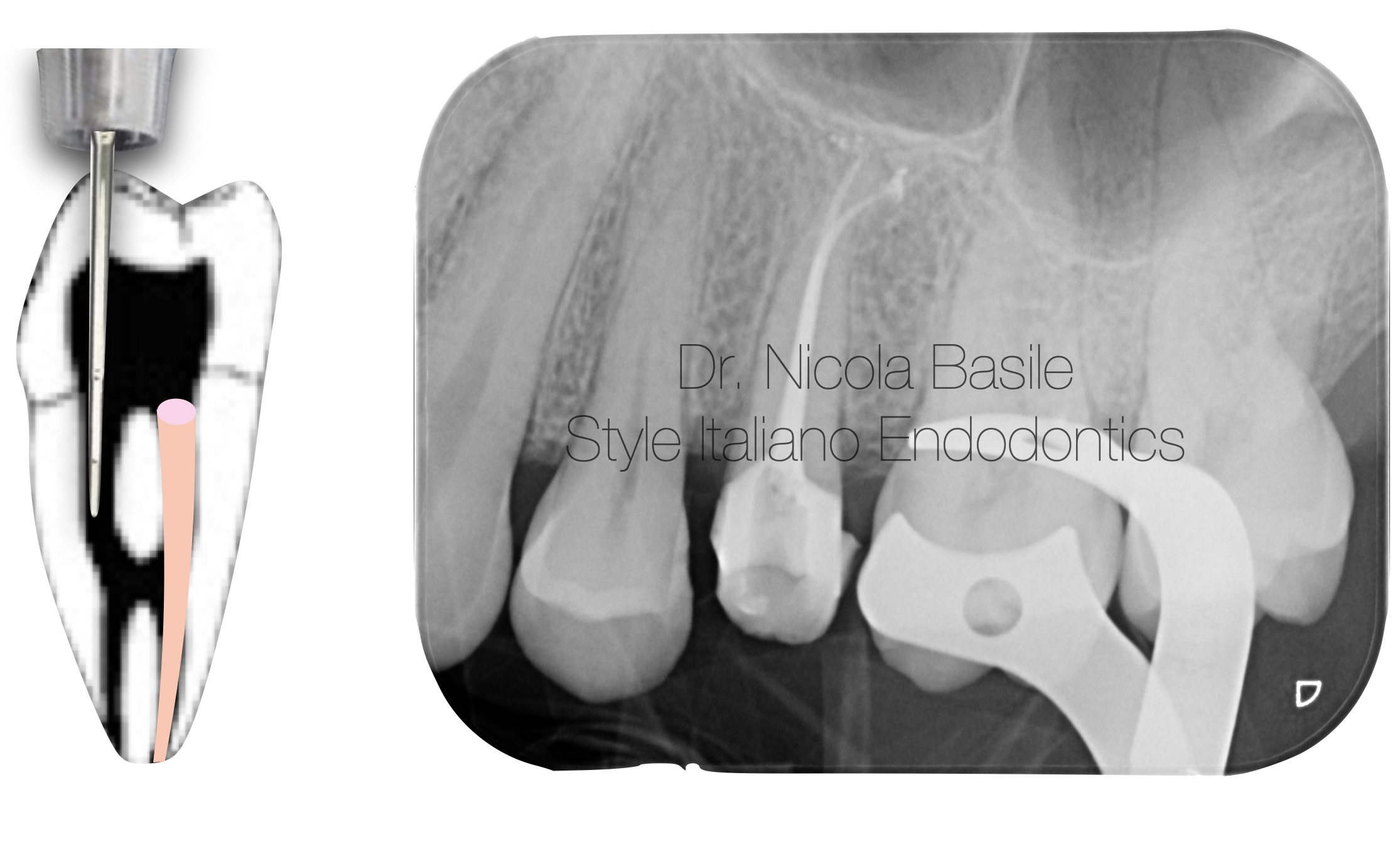
Fig. 6
The root canals are filled using the coneless technique and warm vertical condensation. The filling is performed using a protocol that allows both canals to be closed “together", preventing the filling of one canal from interfering with the filling of the other, due to the presence of the confluence. This technique is useful in confluent canals and is particularly indicated when there is insufficient space to accommodate both gutta-percha cones together or when there are suspected canal, apical of the confluence, that cannot be probed with steel or shaping with mechanical NiTi instruments.
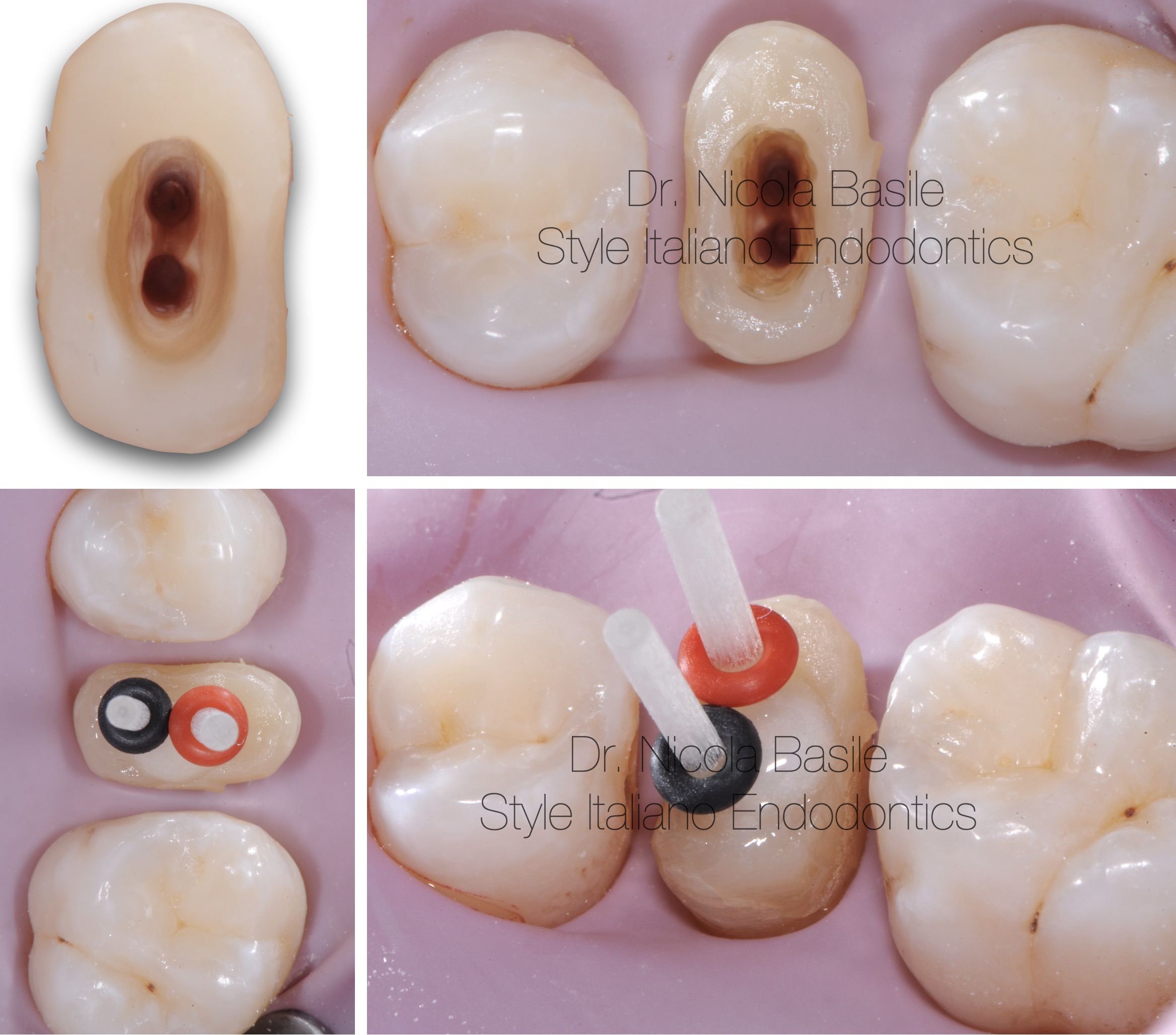
Fig. 7
Third appointment (one month later):
Preparation of the post space using Largo drills sizes 1 and 2, cleaning with air flow and glycine powder, adhesive techniques and luting of two quartz fiber posts.
In the same session, after removing the carious lesions on teeth 2.4 distal and 2.6 mesial, direct composite restorations are performed.
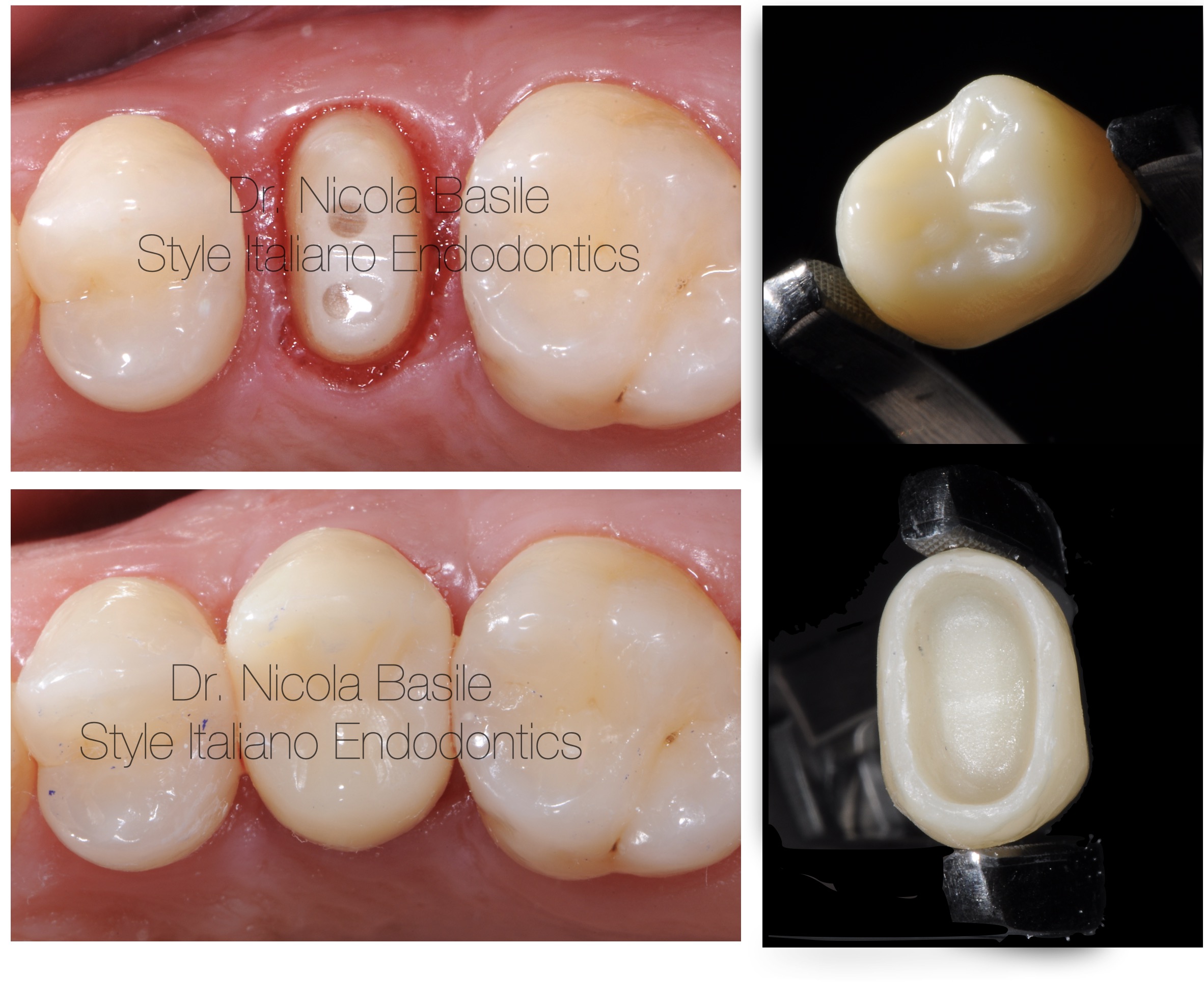
Fig. 8
Still in the same session, the vertical prosthetic preparation of the core is performed, and a relined, finished, and polished temporary crown is delivered.
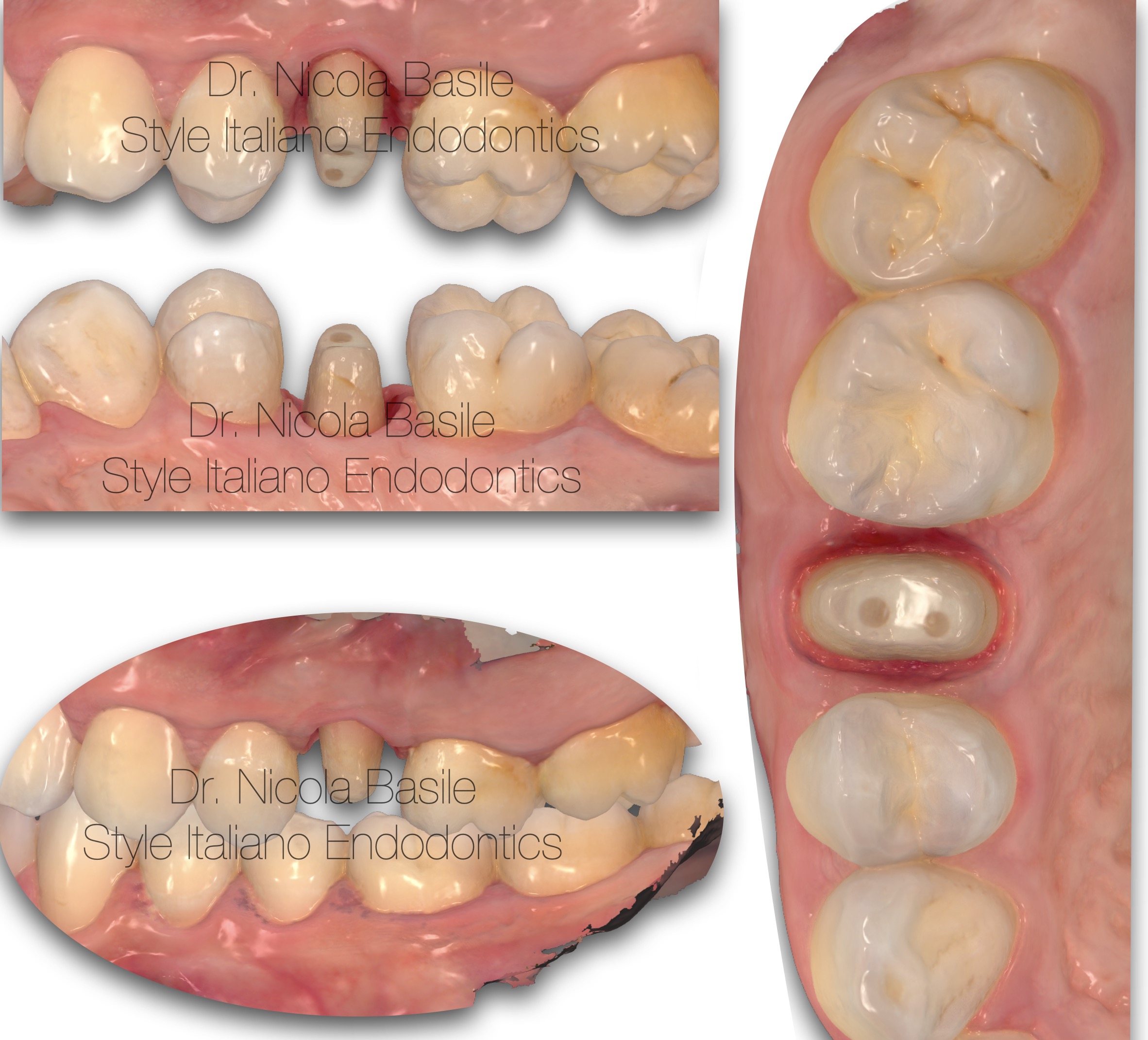
Fig. 9
Fourth appointment, also one month later:
After removing the temporary crown, intraoral scanning is performed, and the dental technician is instructed to fabricate the definitive crown in monolithic zirconia.
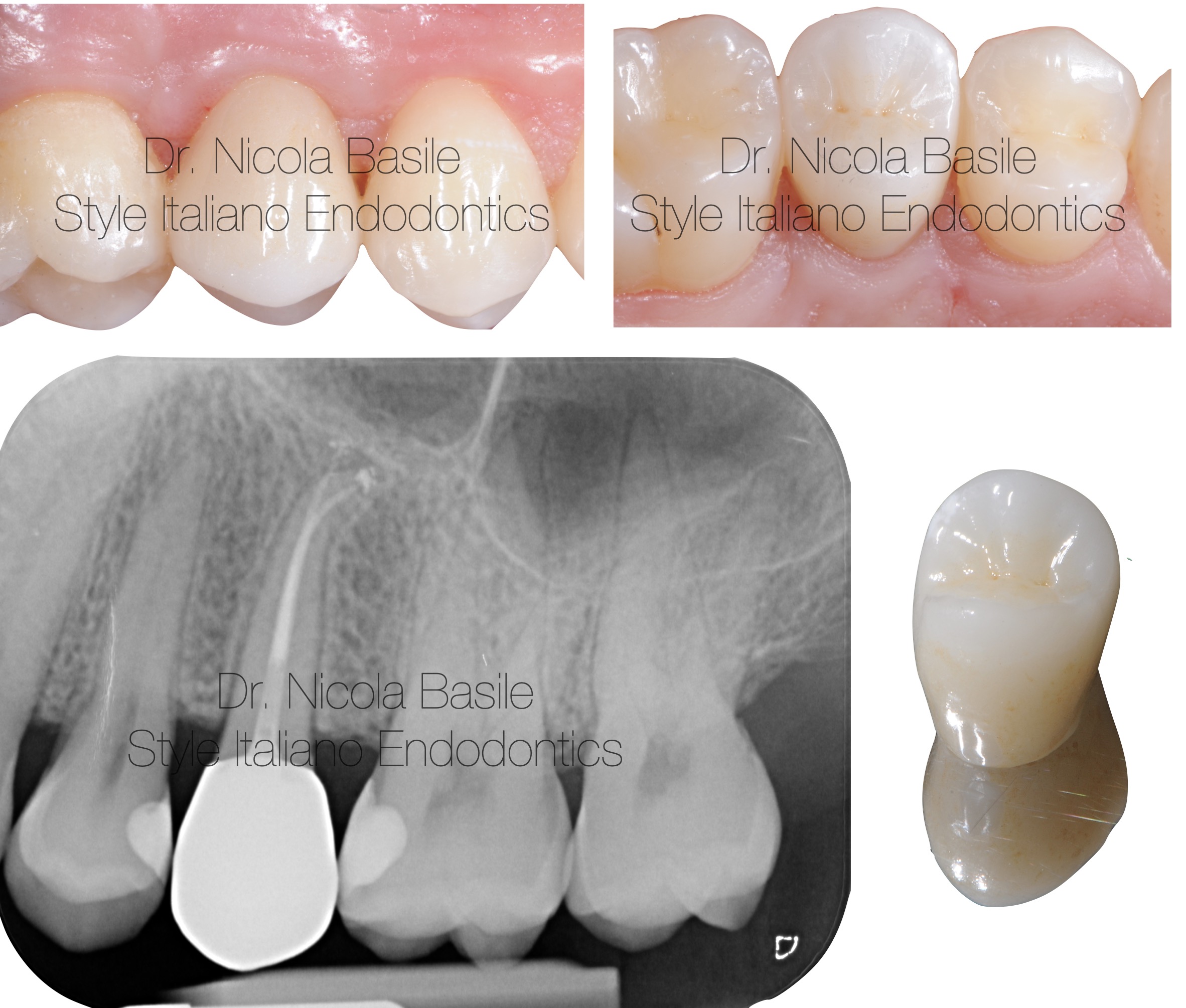
Fig. 10
Fifth monthly appointment:
Luting the zirconia crown after performing fitting and aesthetic checks.
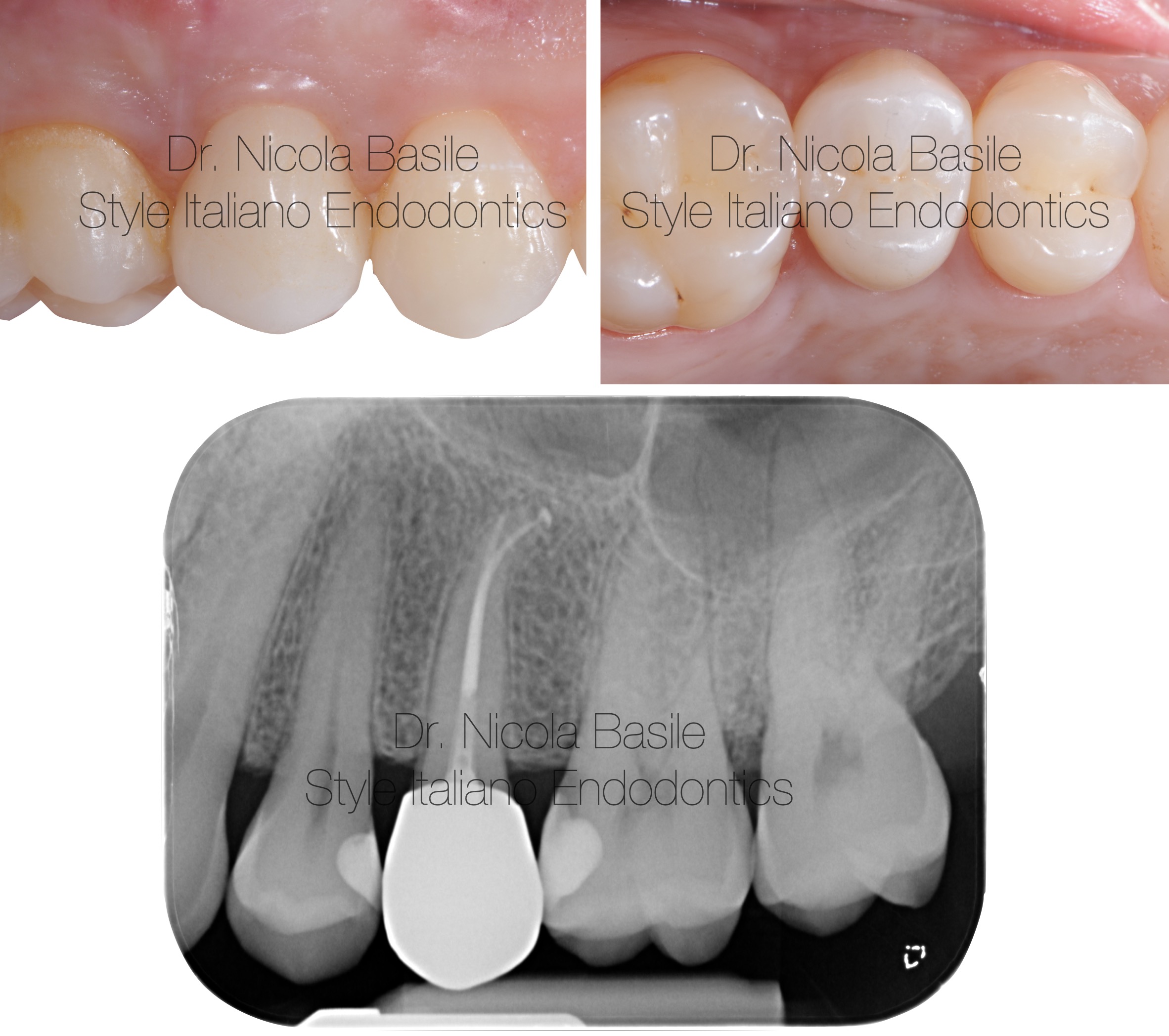
Fig. 11
Three years follow up.

Fig. 12
After completing his studies at the University of Bari (Italy) where
he graduated in Dentistry with honours in 2011, Dr. Nicola Basile
continued his professional development attending the training in
Restorative and Prosthetics Dentistry with Dr. Cesare Dinapoli and
in Endodontics with Dr. Giuseppe Carrieri. This training have
contributed greatly in his clinical skills, raising the bar of his clinical
standards. He has been working in partnership with them since
2014 and providing tutoring for professional development training.
He is a member of Dr. Giano Ricci - Florence Perio Group, member
of the International Team for Implantology (ITI) and active member
of the Accademia Italiana di Endodonzia (AIE).
Since 2016 he has been working in private practice in Acquaviva
delle Fonti (Italy) and as a consultant in Restorative, Prosthetics
Dentistry and Endodontics in various practice in Bari and province
Conclusions
In clinical cases where there are severely compromised teeth requiring a multidisciplinary approach, there is often a question about what the correct decision making is, based on the tooth, the patient's needs, and the clinician's approach.
Is it always the right choice to perform endodontics first and then the restoration? Is it advisable to carry out an endo pre-treatment? What are the patient's requests?
In the clinical scenario presented in this article, both for reasons related to the patient's needs and when there are doubts about the tooth's recoverability, it is advisable to perform an endodontic pre-treatment. This is important to assess the tooth's recoverability before investing time in an unnecessary endo phase if the tooth needs to be extracted. Ideally, if needed, it is beneficial to combine the surgical and definitive restorative phases in a single session so that the tooth is ready for endodontic treatment.
Bibliography
Vertucci FJ. Root canal anatomy of the human permanent teeth. Oral Surg Oral Med Oral Pathol 1984; 58: 589-99.
Veneziani M. Adhesive restorations in the posterior area with subgingival cervical margins: new classification and differentiated treatment approach. Eur J Esthet Dent. 2010 Spring; 5(1):50-76.
Dietschi D, Duc O, Krejci I, Sadan A. Biomechanical considerations for the restoration of endodontically treated teeth: a systematic review of the literature, Part 1. Composition and micro- and macrostructure alterations.
Quintessence Int. 2007 Oct;38(9):733-43.
Dietschi D, Duc O, Krejci I, Sadan A. Biomechanical considerations for the restoration of endodontically treated teeth: a systematic review of the literature, Part II (Evaluation of fatigue behavior, interfaces, and in vivo studies).
Quintessence Int. 2008 Feb;39(2):117-29.
Zicari F, Van Meerbeek B, Scotti R, Naert I. Effect of ferrule and post placement on fracture resistance of endodontically treated teeth after fatigue loading. J Dent. 2013 Mar;41(3):207-15.
Zicari F, Van Meerbeek B, Scotti R, Naert I. Effect of fibre post length and adhesive strategy on fracture resistance of endodontically treated teeth after fatigue loading. J Dent. 2012 Apr;40(4):312-21.


